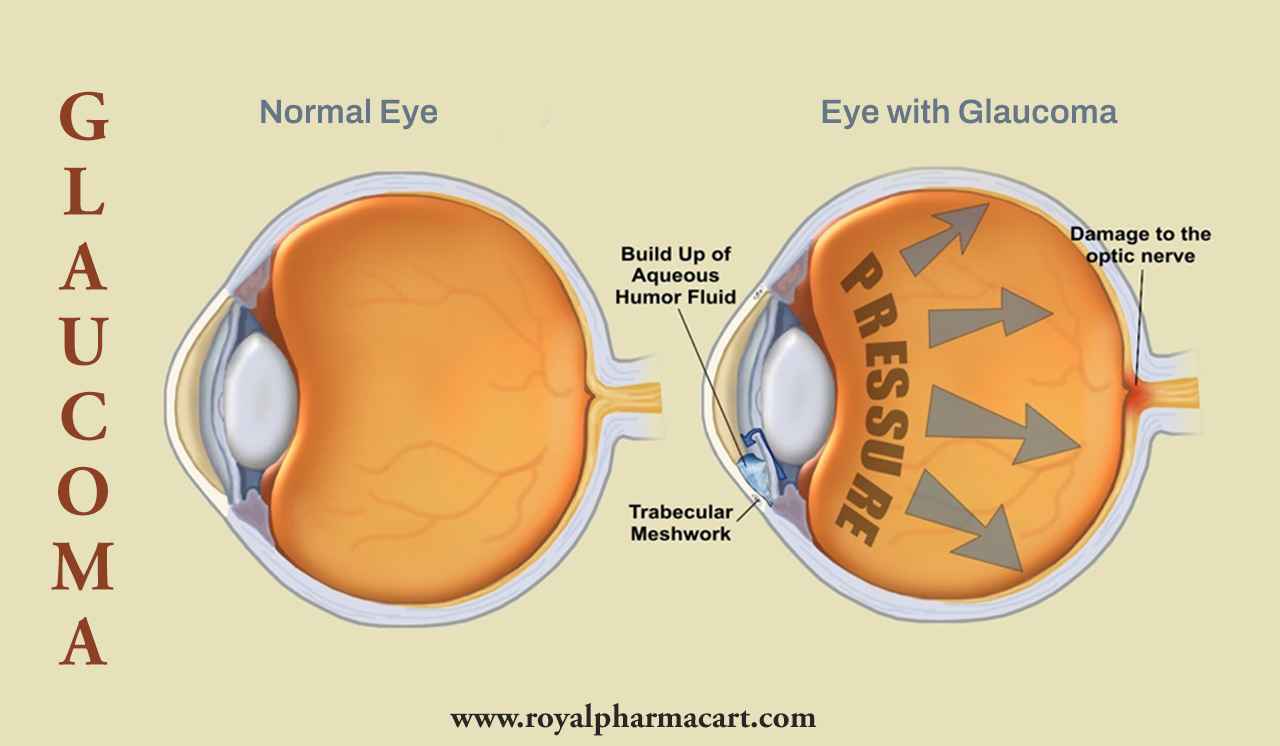eyelashes drop, Personal Care
Glaucoma: Symptoms, causes, Diagnosis & Treatment
What is glaucoma?
Glaucoma is a condition that damages the optic nerve of the eye. Over time it gets worse. Often associated with increased intraocular pressure. Glaucoma tends to operate in familiar ways. You usually don’t get it until later in life.
An increase in pressure inside the eye, called intraocular pressure, can damage the optic nerve, which sends images to the brain. If the damage gets worse, glaucoma can lead to permanent vision loss or complete blindness within a few years.
Most people with glaucoma have no early symptoms or pain. See your eye doctor regularly to diagnose and treat glaucoma before it leads to long-term blindness.
Once you’ve lost your sight, you can’t get it back. However, vision can be maintained by lowering intraocular pressure. Most people with glaucoma who follow a treatment plan and have regular eye exams can preserve their vision.
What are the symptoms of glaucoma?
The most common type of glaucoma is primary open angle glaucoma. There are no signs or symptoms other than the gradual loss of vision.
For this reason, it is important to have a full eye exam every year so that your eye doctor or eye doctor can monitor the changes in your vision.
Acute angle-closure glaucoma, also called angle-closure glaucoma, is a medical emergency. Seek immediate medical attention if any of the following symptoms occur:
- Severe pain in the eyes
- Disease
- Vomit
- Redness of the eyes
- Sudden visual impairment
- Look at the colored rings around the lights.
- Suddenly blurred vision
Causes of glaucoma
The fluid inside the eye, called aqueous humor, usually drains from the eye through a mesh channel. Fluid builds up when this passage is blocked or when too much fluid is produced in the eye.
Sometimes experts don’t know the cause of this blockage. However, it can be inherited. That is, it is passed from parent to child.
Less common causes of glaucoma include blunt force or chemical damage to the eye, severe eye infections, blockage of blood vessels within the eye, and inflammatory conditions.
Rarely, sometimes the cause may be eye surgery to correct another condition. It usually affects both eyes, but one eye can be worse.
What are the types of glaucoma?
There are five main types of glaucoma. these are:
Open angle glaucoma (chronic)
Open-angle or chronic glaucoma has no signs or symptoms other than gradual loss of vision. This loss can be so slow that it causes irreparable damage to vision before other signs appear.
According to a reliable source from the National Eye Institute (NEI), it is the most common type of glaucoma.
Closed angle (acute) glaucoma.
A sudden blockage of the flow of aqueous humor can cause severe, rapid, and painful pressure build-up due to the rapid build-up of fluid. Closed-angle glaucoma is an emergency.
If you start experiencing symptoms such as severe pain, nausea, or blurred vision, you should call your doctor right away.
Congenital glaucoma
Babies born with congenital glaucoma have a defective eye angle that slows or prevents normal fluid drainage. Congenital glaucoma usually presents with symptoms such as dull eyes, excessive tearing, or sensitivity to light. Congenital glaucoma can run in families.
Secondary glaucoma
Secondary glaucoma is often a side effect of an injury or other eye disease, such as a cataract or eye tumor. Medicines such as corticosteroids can also cause this type of glaucoma. Rarely, eye surgery can cause secondary glaucoma.
Normal tension glaucoma
In some cases, optic nerve damage occurs in people who do not have increased intraocular pressure. The cause is unknown. However, extreme tenderness or lack of blood flow to the optic nerve can cause this type of glaucoma.
Glaucoma Diagnosis
A test for glaucoma is painless and quick. An eye doctor will check your vision. They use an IV to dilate (dilate) the pupil and examine the eye.
Check the optic nerve for signs of glaucoma. They might take pictures so you can spot changes on your next visit. They will do a test called tonometry to check eye pressure. A visual field test may also be done to see if the person has lost peripheral vision.
If the doctor suspects glaucoma, he may order a special optic nerve imaging test.
Treatment of glaucoma
Open-angle glaucoma is often treated with a combination of eye drops like Lumigan Eye drop 0.03%, laser trabeculoplasty, and microsurgery. Doctors tend to start with medication, but some people do better with laser surgery or early microsurgery.
Eye Drops. Careprost Eye Drops reduce the production of fluid in the eye or increase its outflow to reduce intraocular pressure. Side effects include allergies, redness, burning, blurred vision and itchy eyes. Some glaucoma medications affect the heart and lungs.
Be sure to tell your doctor about any other medical conditions you have and any other medications you are taking due to potential drug interactions. Also let me know if you have any problems following or if you have any secondary side effects. They may be able to change the treatment.
Oral medicine. Doctors may also prescribe oral medications, such as beta blockers and carbonic anhydrase inhibitors. These drugs can improve drainage or slow fluid production in the eye.
laser surgery. This procedure can slightly increase the flow of fluid from the eye in open angle glaucoma. It can stop fluid blockage in closed-angle glaucoma. Here are the steps:
Trabeculoplasty. This will open up the drainage area.
Iridotomy. This creates a small hole in the iris and allows the fluid to flow more freely.
Circulatory photocoagulation. Treat the area of the middle layer of the eye to reduce fluid production.
Microsurgery. In a procedure called a trabeculectomy, the doctor creates a new channel to drain fluid and relieve pressure in the eye. This form of surgery may need to be done multiple times. The doctor can implant a tube to help drain the fluid. This surgery can cause temporary or permanent vision loss, as well as bleeding and infection.
Minimally Invasive Glaucoma Surgery (MIGS). This is a new, less invasive form of surgery that typically requires a small opening and uses devices that are invisible to the naked eye. It’s generally faster and safer, but it doesn’t drop that much pressure. It can also be performed at the same time as other surgical procedures such as cataract surgery.

